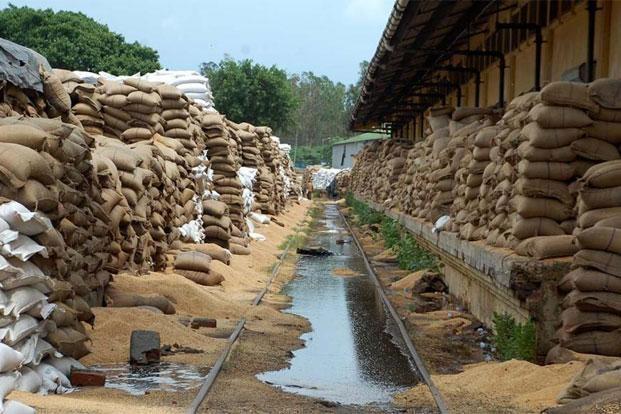Why a Supply-Constrained Economy is Better Than a Demand-Constrained One

The idea is an old one, but the Hungarian economist, Janos Kornai, clearly conceptualised it, by drawing a distinction between a “demand-constrained system” and a “resource-constrained system”.
A demand-constrained system is one where employment and output in the system are what they are because the level of aggregate demand is what it is; if the level of demand increases, then output and employment in the economy will increase, with very little increase in the price-level.
By contrast, a “resource-constrained system”, which can also be called a “supply-constrained system”, is one where an increase in the level of aggregate demand, say, because of larger investment or larger government expenditure, does not have the effect of raising output and employment in the economy, rather it increases the price-level (such an increase, however, may be repressed through generalised price-control and rationing).
Put differently, a demand-constrained system is characterised by the existence of unemployment, unutilised capacity, and unsold stocks of raw materials (or raw materials that can be obtained when required).
A supply-constrained system, by contrast, is one where such reserves of labour, equipment and raw material stocks do not exist, and a rise in demand, if it occurs, leads not to any increase in supply but rather to an increase in prices (which may of course be repressed).
Clearly, it is better for any system to be supply-constrained, for then it is producing to its maximum potential, rather than being demand-constrained, for in the latter case its production potential is remaining unutilised.
Capitalism is essentially a demand-constrained system. It is always characterised by unemployment; this unemployment may be larger or smaller, but it never disappears. Or, as Karl Marx had put it, a reserve army of labour is a perennial feature of capitalism. Likewise, a capitalist economy rarely produces to full capacity. Even in the most pronounced of booms there is always a certain amount of unutilised capacity at the top of the boom; it is only in times of war that a capitalist economy reaches full capacity production but not otherwise.
Similarly, employment and output under capitalism have scarcely ever been constrained by a shortage of raw materials. Historically, raw materials have been obtained whenever required, by squeezing the Third World’s raw material absorption. Hence capitalist economies experience a limit to their output that comes from the side of aggregate demand.
By contrast, the socialist economies that existed were invariably supply-constrained. There was labour shortage rather than unemployment; and unutilised capacity (except to the extent that firms may have deliberately wanted to hold some in order to cope with contingencies) scarcely existed. The big contrast between classical capitalism and classical socialism, a contrast of great significance and relating to the immanent tendency of each system, lay in this: classical capitalism was demand-constrained while classical socialism was supply-constrained.
To be sure, there may be occasional specific bottlenecks even in a demand-constrained system and there may be occasional undesired excess capacity in a particular sector even in a supply-constrained system; but this should not make any difference to our overall characterisation of the systems.
The specific bottleneck in a demand-constrained system can be overcome through specific measures in the event of an increase in aggregate demand that would still raise overall output and employment; and likewise, the specific excess capacity in a particular sector does not mean that overall output and employment can be expanded with impunity through an increase in aggregate demand.
One implication of this characterisation must be noted. There used to be much talk at one time about the fact that while capitalism entailed an allocation of the economy’s resources that was “efficient”, in the sense that a state of affairs was invariably reached through the functioning of markets where the production of more of one good would necessarily entail the production of less of some other good (s), socialism was characterised by inefficiency in this sense because it lacked markets. Even leaving aside comparisons, it was claimed, and often is to this day, that capitalism allocates resources ‘efficiently” through the market mechanism.
This claim, however, is completely invalid once we recognise that under capitalism resources are never fully utilised. Even if we accept for argument’s sake that 80% of resources, say, are so utilised that producing any more goods at the margin, using these 80% of resources, is impossible, this fact does not make the system “efficient” if 20% of resources are lying idle.
The concept of “efficiency”, in short, requires as a necessary condition that resources be fully utilised; and if this is not the case then the system cannot be called “efficient”. No demand-constrained system can be efficient and this is true of capitalism, which is a demand-constrained system.
In India and several other Third world countries, dirigiste regimes were set up after decolonisation, which functioned in such manner that while industry was characterised by unutilised capacity, the level of foodgrain production (though greatly increased compared with the colonial period) constrained the utilisation of this capacity. Any increase in demand for industrial goods, through larger government expenditure, for instance, would cause inflation in the foodgrain sector; and this is what held back such an increase. Such economies, therefore, were supply-constrained systems but characterised by unutilised capacity in the industrial sector.
This “mixed” behaviour of theirs was in keeping with their being “mixed” economies. A socialist economy would have got rid of such unutilised capacity through proper planning, but not so these “mixed” economies which were basically engaged in developing capitalism though with substantial state intervention: a cut-back in industrial investment in such economies for getting rid of unutilised industrial capacity would have aggravated unutilised industrialised capacity.
With the introduction of neo-liberal policies in such economies, they are now closer to classical capitalism, and are no longer the earlier “mixed economy”. They now resemble typical demand-constrained systems, having not only unutilised industrial capacity but also substantial unsold foodgrain stocks, which often have to be exported at throwaway prices.
The proximate constraint on these countries’ employment and output arises not because of shortage of foodgrains but because of a shortage of demand, including for foodgrains, owing to the limited purchasing power in the hands of the working people. This is not alleviated through larger state expenditure, unlike under the earlier dirigiste regime, because of the opposition of international finance capital to larger fiscal deficits and to larger taxes on the rich (which are the only means of financing state expenditure that would raise aggregate demand).
This finance-imposed constraint on state expenditure is sometimes passed off as an objective constraint arising from an absolute scarcity of fiscal resources. This is completely wrong. There cannot possibly be a shortage of fiscal resources in a demand-constrained system. In a demand-constrained system, even if state expenditure is financed entirely through a fiscal deficit, this can have no inflationary consequences, since the economy has unutilised resources.
True, a fiscal deficit has the effect of putting profits in the hands of capitalists and thereby increasing the inequality in wealth distribution (since a part of these profits are saved and add to the capitalists’ wealth). To keep this inequality in check, these additional profits arising from larger state expenditure have to be taxed away (in which case there is no rise in the fiscal deficit); but such a profit tax-financed state expenditure would still leave post-tax profits exactly where they were before state expenditure increased. Larger state expenditure, in other words, would simply use up the unutilised resources that exist in the economy without reducing anyone’s share. The existence of such unutilised resources means in effect that one can get “something for nothing”.
A demand-constrained system cannot possibly have a shortage of fiscal resources for financing larger state expenditure. To suggest otherwise amounts to diverting attention away from the role of international finance capital. It amounts to taking the constraint imposed by international finance capital as an absolute constraint.
Get the latest reports & analysis with people's perspective on Protests, movements & deep analytical videos, discussions of the current affairs in your Telegram app. Subscribe to NewsClick's Telegram channel & get Real-Time updates on stories, as they get published on our website.
























